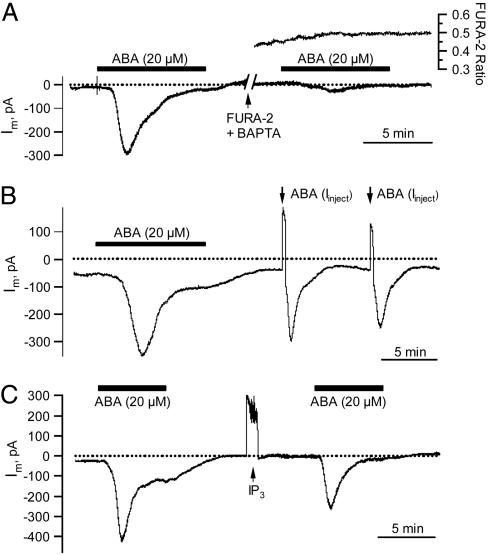Fig. 3.
Cytoplasmic application of BAPTA, ABA, and the putative second messenger InsP3.(A) Repression of the ABA-induced anion current transient by cytoplasmic BAPTA. (Left) Response to external ABA before loading BAPTA. (Right) Strong inhibition of the ABA response after simultaneous loading of BAPTA and FURA-2. The cell was loaded by means of the third barrel of the microelectrode filled with 2 mM FURA-2 and 50 mM BAPTA. Upper trace shows the FURA-2 F345/F390 fluorescent ratio. (B) Guard cell response to externally and cytoplasmically applied ABA. Anion current transients were triggered with ABA externally (black bar) and subsequently through a 30-s loading pulse of ABA by means of the third barrel of the microelectrode filled with 100 μM ABA (arrows). Note that during injection the membrane potential remained clamped at –100 mV, the inward loading current by means of the third barrel, therefore, is compensated by an outward current. (C) Current response to the putative signaling intermediate InsP3. Before and after InsP3 injection, anion current transients were elicited with extracellular ABA (black bars) at a holding potential of –100 mV.

